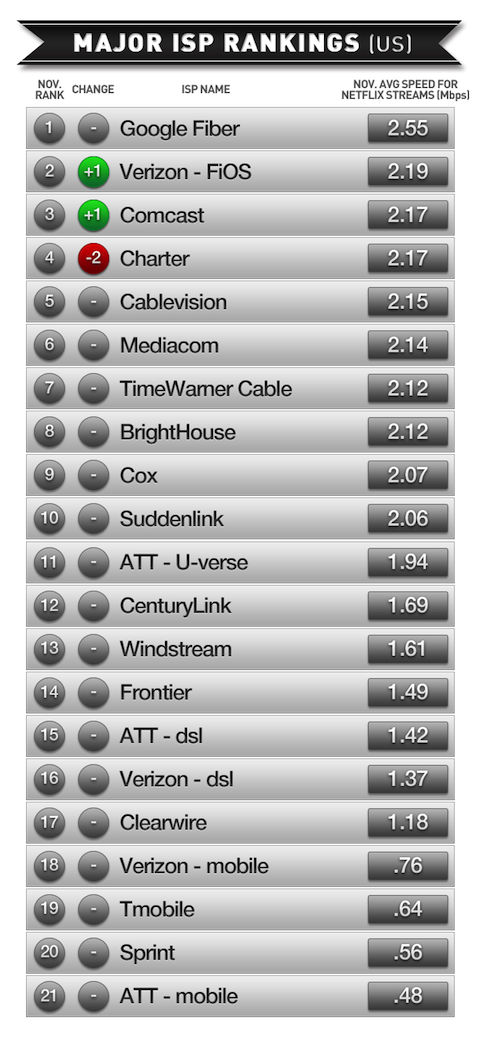
I was a late adopter to Netflix, a rare circumstance for me, but not because I found the concept unappealing. The idea of streaming TV and video is a really cool concept that, at $7.99 a month, is a fantastic deal compared to purchasing content over time or renting from various locations. No, I just found myself without much time.
But Netflix has taken the Amazon model of putting itself anywhere and everywhere it can, from Apple TV to Android mobile devices, and as a result has made itself worth it for all sorts of reasons. It’s recent news of acquiring the Disney library for future streaming, including Pixar and Lucasfilm, is a huge coup, and they are the company that finally is bringing Arrested Development back from the dead. They are touting more than 1 billion hours of video watched every month by more than 30 million people, and studies routinely show them as being a huge percentage of primetime data flow.
So who better than Netflix to analyze the quality of the connections hitting their network? After all, their software smartly detects the data speed that is being delivered, so they can optimize the stream and avoid buffering. That’s why those on higher connections sometimes see a bit of softness or jagginess for a brief moment before the higher-quality streaming kicks in. And, with a simple bit of detecting what the browsers are providing, Netflix can quickly see who’s got the best connection.
Surprisingly, the numbers, both for home and mobile, aren’t nearly as divergent as you would expect. Google Fiber was the winner, but excluding them, since it’s not widely available, Verizon FiOS, Comcast and Charter were basically tied (FiOS is a tad faster). Cablevision, who has advertised the nation’s fastest connections at times, lagged a bit behind. Interestingly, U-Verse was topped by FiOS; both services promise a next-generation level, but U-Verse lags competitors quite a bit.
On the mobile side, Verizon led, but it was T-Mobile second, a bit of a surprise. Sprint beat AT&T, so maybe all those complaints about iPhone speeds are warranted. Clearwire, which provides WiMax 4G wireless service, was ahead of all four carriers, which is to be expected at this stage, given all four are still in various stages of rolling out their next-generation networks.
Now, these are averages, and your mileage may vary. In many cases, how crowded your individual neighborhood is and how much activity on it can determine what your speeds are, as is the package you subscribe to (many people don’t opt for the fastest packages, so that can drive down a provider’s average). But as a national average comparing major service providers, it is an interesting exercise. Here is their full graphic:

Netflix as of late has been releasing some cool data, something OK Cupid used to do expertly. Hopefully they’ll continue to share.
SOURCE: Netflix via The Consumerist, AP via WRAL Techwire